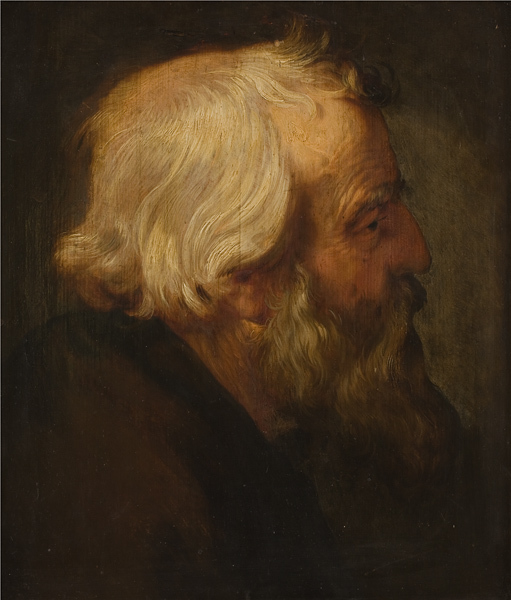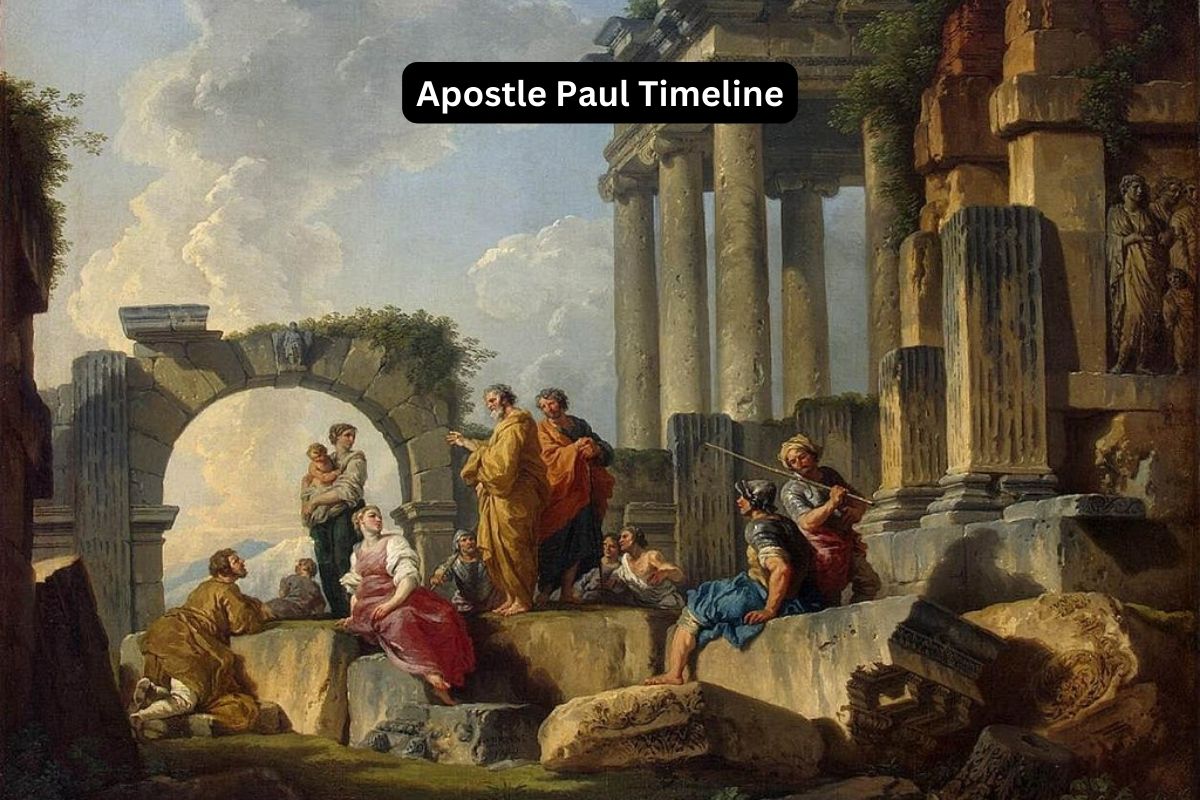The Apostle Paul, originally Saul of Tarsus, was a pivotal figure in early Christianity. Born in the 1st century AD in Tarsus (modern-day Turkey), he initially opposed Christianity but underwent a transformative conversion on the road to Damascus.
Paul became a prominent advocate, theologian, and missionary. His extensive travels spread the Gospel to diverse audiences, and his Epistles, or letters, provided theological guidance to early Christian communities.
Paul’s influence is foundational to Christian theology and practice, making him a central figure in the history of Christianity.
| Event | Date/Period |
|---|---|
| Birth and Early Life | Approximately 5-10 AD |
| Conversion to Christianity | Around 30-36 AD |
| Early Ministry | After conversion |
| Return to Damascus and Escape | After conversion |
| Ministry in Antioch | After returning from Damascus |
| First Missionary Journey | Around 46-48 AD |
| Jerusalem Council | Around 49-50 AD |
| Second Missionary Journey | Around 50-52 AD |
| Third Missionary Journey | Around 53-57 AD |
| Arrest in Jerusalem | Around 57 AD |
| Imprisonment in Caesarea | Around 57-59 AD |
| Voyage to Rome | Around 59-60 AD |
| Imprisonment in Rome | Around 60-62 AD |
| Death | Between 64-67 AD |
Timeline of the Apostle Paul
Birth and Early Life
The Apostle Paul, originally known as Saul of Tarsus, was born approximately between 5 and 10 AD in Tarsus, a city in the region of Cilicia, which is located in modern-day Turkey.
Tarsus was known for its education and cultural diversity, and Saul likely received a Greek and Jewish education, making him fluent in both Greek and Hebrew.

Conversion to Christianity
The most pivotal event in Saul’s life occurred around 30-36 AD. At this time, he was a devout Pharisee who ardently opposed the early Christian movement.
While traveling to Damascus, Syria, with the intent of persecuting and arresting Christians, Saul had a life-altering encounter.
Also Read: Facts About the Apostle Paul
According to the Book of Acts in the New Testament, a bright light from heaven surrounded him, and he heard the voice of Jesus Christ. This experience left him temporarily blinded and led to his conversion to Christianity.
Saul’s encounter with Jesus on the road to Damascus is considered one of the most significant moments in Christian history. He went from being a zealous opponent of Christianity to becoming one of its most influential advocates and theologians.
Early Ministry
Following his conversion, Saul, now known as Paul, spent some time in Damascus and Arabia. While the New Testament does not provide extensive details about this period, it is believed that Paul used this time for spiritual reflection, study, and to deepen his understanding of the Christian faith.
Also Read: The Apostles Facts
In his letter to the Galatians (Galatians 1:15-17), Paul briefly mentions this period, emphasizing that he did not immediately consult with other Christian leaders in Jerusalem but received his knowledge and calling through a revelation of Jesus Christ.
Return to Damascus and Escape
After his conversion to Christianity, Paul initially remained in Damascus, where he began to preach the Gospel and share his newfound faith in Jesus Christ. However, he soon encountered opposition from the Jewish authorities in the city who were hostile to his teachings.
According to the Book of Acts (Acts 9:23-25), Paul’s situation became so dangerous that the disciples in Damascus had to lower him down from the city wall in a basket to help him escape the city. This daring escape was necessary to save his life, as there were plots to kill him.
Ministry in Antioch:
After his escape from Damascus, Paul made his way to Jerusalem, where he met with the apostles, including Peter and James, to share his conversion experience and receive their recognition and approval (Galatians 1:18-19).
Following this, Paul traveled to Antioch, a city in Syria. Antioch played a pivotal role in the early Christian community, and Paul became a prominent figure there. He joined the Christian community in Antioch and participated in the teaching and spreading of the Gospel.
It was in Antioch that the followers of Jesus were first called “Christians” (Acts 11:26), indicating the growing identity of the early Christian movement.

First Missionary Journey
Around 46-48 AD, Paul embarked on his first missionary journey. This journey was a significant step in the spread of Christianity beyond its Jewish roots and into the Gentile (non-Jewish) world.
Paul, accompanied by Barnabas and later joined by John Mark, traveled to various cities and regions, including Cyprus, Pisidian Antioch, Iconium, Lystra, and Derbe. In these places, they preached the Gospel, established Christian communities, and performed miracles to validate their message.
During this journey, Paul faced both acceptance and opposition. In some places, he encountered receptive audiences, while in others, he faced hostility from Jewish leaders who were resistant to his teachings.
Paul’s first missionary journey marked the beginning of his extensive travels and missionary efforts, which would continue throughout his life. It laid the foundation for his future missions and the establishment of numerous Christian congregations in the Greco-Roman world.
Jerusalem Council
Around 49-50 AD, Paul attended the Jerusalem Council, a significant gathering of early Christian leaders in Jerusalem. The primary issue at the council was whether Gentile converts to Christianity needed to follow Jewish customs, including circumcision.
Paul argued for the inclusion of Gentiles into the Christian community without requiring them to adopt Jewish practices, emphasizing that faith in Jesus Christ was sufficient for salvation.
The council agreed with Paul’s position, and this decision played a crucial role in the early church’s expansion beyond Jewish communities.
Second Missionary Journey
Around 50-52 AD, Paul set out on his second missionary journey. During this journey, he traveled to various regions in Asia Minor and Greece, building on the foundations laid during his first journey.
Some of the notable stops included Philippi, where he met Lydia and her household; Thessalonica, where he preached and established a church; Berea, where the Berean Jews were commended for their open-mindedness; Athens, where he engaged with Greek philosophy and delivered the famous Mars Hill address; and Corinth, where he spent a significant amount of time and wrote letters to the Thessalonians.
This journey was marked by both successes in spreading the Gospel and challenges, including opposition from Jewish leaders and local authorities.

Third Missionary Journey
Around 53-57 AD, Paul embarked on his third missionary journey, which focused primarily on the region of Asia Minor (modern-day Turkey) and Greece.
During this journey, Paul spent a significant amount of time in the city of Ephesus, where he encountered intense opposition from those involved in the worship of the goddess Artemis. Despite these challenges, he played a central role in establishing the Christian community in Ephesus.
Additionally, Paul revisited some of the churches he had established during his previous journeys, providing guidance, encouragement, and instruction to these communities.
His third journey was characterized by the strengthening of existing Christian communities and the expansion of the Gospel’s influence in the region.
Arrest in Jerusalem
Around 57 AD, Paul’s extensive missionary efforts led to his arrest in Jerusalem. Jewish authorities accused him of defiling the temple and inciting a riot by bringing a Gentile into the restricted area of the temple (Acts 21:27-30).
His arrest marked a turning point in his ministry as he was taken into Roman custody to protect him from the angry crowds. This event set in motion a series of events that would eventually lead Paul to his imprisonment in Caesarea and, ultimately, his journey to Rome.
Arrest in Jerusalem
Around 57 AD, Paul’s extensive missionary efforts led to his arrest in Jerusalem. Jewish authorities accused him of defiling the temple and inciting a riot by bringing a Gentile into the restricted area of the temple (Acts 21:27-30).
To protect him from the angry crowds, Roman soldiers intervened and arrested Paul. This event marked a turning point in his ministry and safety.
Imprisonment in Caesarea
From approximately 57-59 AD, Paul was imprisoned in Caesarea, a Roman provincial capital. He was held there while awaiting trial on the charges brought against him in Jerusalem.
During his imprisonment in Caesarea, Paul had opportunities to share his faith and defend himself before Roman officials, including the governors Felix and Festus and the Jewish king Agrippa II. His interactions with these authorities are recorded in the Book of Acts.
While in Caesarea, Paul remained committed to his mission, continuing to preach and share the Gospel with those around him.
Voyage to Rome
Around 59-60 AD, Paul exercised his rights as a Roman citizen and appealed to Caesar for a fair trial. As a result, he was sent to Rome, the capital of the Roman Empire, for his case to be heard before the emperor.
The voyage to Rome, as described in the Book of Acts (Acts 27-28), was marked by significant challenges, including a shipwreck on the island of Malta. Despite these hardships, Paul’s faith and leadership provided comfort and guidance to those on board.
Imprisonment in Rome
From around 60-62 AD, Paul remained under house arrest in Rome. During this period, he continued to preach, teach, and write letters (Epistles) to various Christian communities.
While under house arrest, Paul wrote some of his most famous letters, including Ephesians, Philippians, Colossians, and Philemon, collectively known as the “Prison Epistles.” These letters contain valuable theological insights and guidance for early Christian communities.
Death
The exact date of Paul’s death is uncertain, but it is traditionally believed to have occurred between 64 and 67 AD. During this time, the Roman Emperor Nero was persecuting Christians in Rome, and tradition holds that Paul was among those martyred.
Various accounts and traditions suggest that Paul was executed by beheading in Rome, marking the end of his life of missionary journeys, prolific letter writing, and profound influence on the early Christian church.
